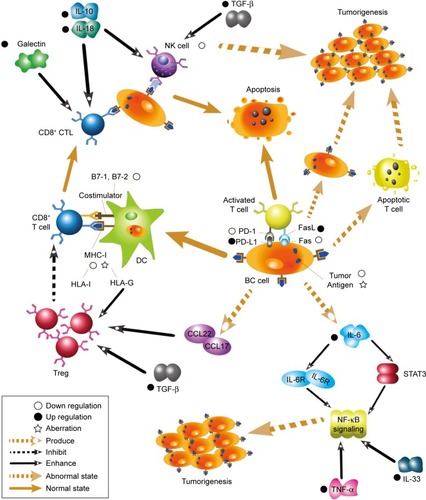Figures & data
Figure 1 A summarized network of immune evasion mechanisms and their interactions.

Table 1 Factors influencing the cellular apoptosis in breast cancer
Figure 2 Influences of Fas/FasL system on apoptosis.
Abbreviations: FasL, Fas ligand; Fas, factor-associated suicide; DD, death domain; BC, breast cancer.

Table 2 Interleukins associated with the immune evasion in breast cancer
